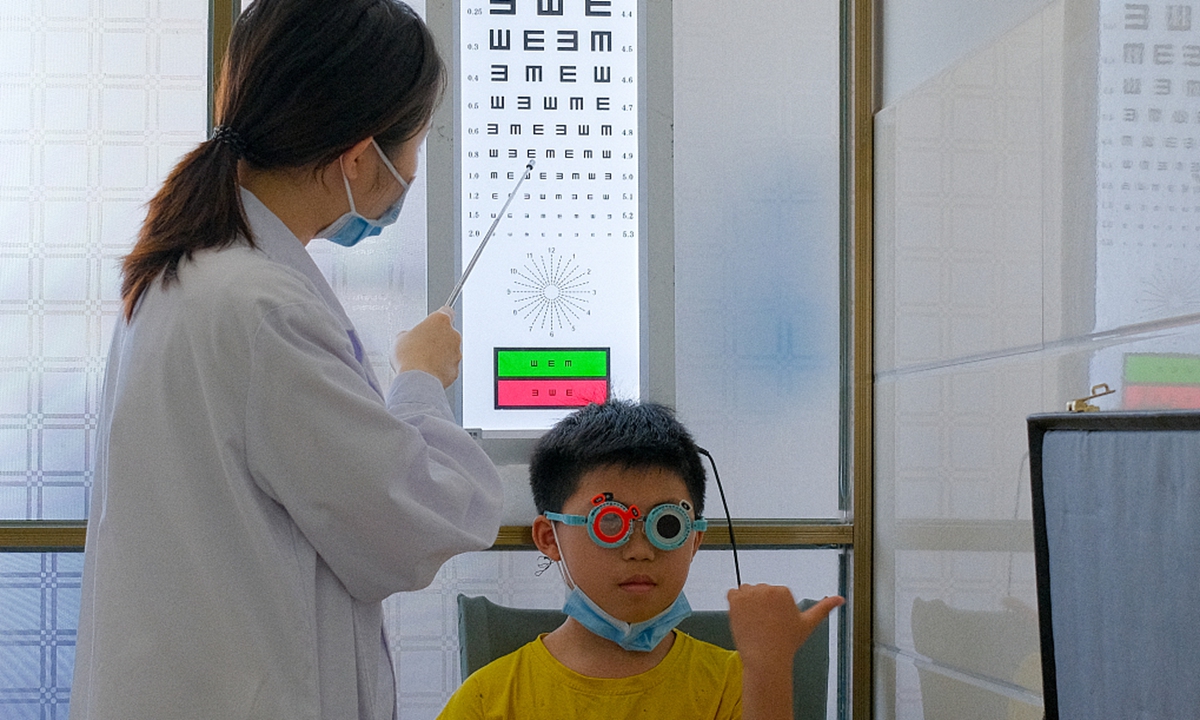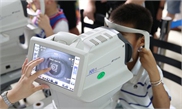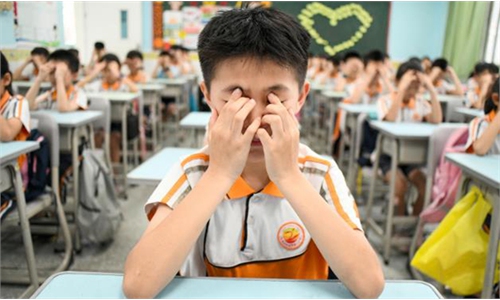China promotes prevention and control of myopia as part of its national health policy

An ophthalmologist checks the eyesight of a child in Yongzhou, Central China's Hunan Province on June 6, 2021, the 26th Chinese National Eye Care Day. Photo: CFP
The widespread short-sightedness problem has once again become a hot topic on the internet on the 26th Chinese National Eye Care Day on Sunday. According to data recently released by the Chinese National Health Commission, the overall prevalence of myopia among children and adolescents in China is 53.6%, with 81% for high school students and 90% for college students, according to a report by China Central Television.
The theme of this year's Eye Care Day is "Focus on Universal Eye Health." A survey by the World Health Organization revealed that about 600 million people in China, nearly half the population, have myopia, Xinhua news agency reported. Eye specialists told the Global Times that myopia has become a major health problem for the Chinese people and has received much wider attention. In recent years, preventing and controlling myopia has been promoted as a national health strategy.
Experts attribute the soaring rate of myopia in China to unhealthy lifestyles. "For adolescents, the increasing pressure of study makes them spend too much time indoors studying without enough time for outdoor exercise. And many youngsters in China nowadays are indulged in computer games or internet surfing, focusing their eyes on fluorescent screens for long periods of time," an attending physician surnamed Zhang, from the Ophthalmology Department of the Peking University First Hospital, told the Global Times on Sunday.
At the same time, some scholars have defined the year 2020 as "The Year of Quarantine Myopia." During home quarantine for the epidemic, many students that used computers and mobile phones for online classes suffered a substantial decline in the visual acuity, the New York Times reported.
In August 2020, a sample survey made by the Chinese Ministry of Education showed that the myopia rate among Chinese primary and secondary school students increased by 11.7% in the first half of 2020 compared to the end of 2019.
Expert noted that myopia prevention and control at an early age are essential and crucial. "Children who suffer from myopia at a younger age are more likely to develop acute myopia, leading to visual impairment and even blindness in old age," Zhang said.
China's eyewear industry has developed as more young people have poor eyesight. According to data from Chinese corporate database Tianyancha, there are more than 1.2 million enterprises on this industry nationwide, with more than 150,000 new related businesses opening in the first half of this year representing a 12.5% year-on-year increase.
Zhang pointed out that currently, the promotion of eye health and the prevention and treatment of myopia have already risen to national policy level. In 2018, China's Ministry of Education, the National Health Commission and six other departments jointly started a project to cut the myopia rate among 6-year-old kids to 3 percent by 2030. In the 14th Five-Year Plan announced this year, it is also clearly required to "effectively control childhood obesity and myopia."



